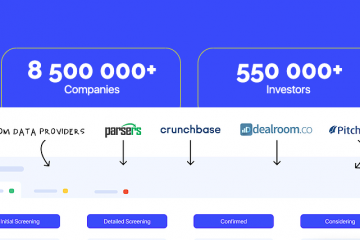How Big Data and Machine Learning protect your money
What is antifraud and where is it used
Usually, antifraud is associated only with the banking sector, when financial transactions are evaluated for fraud, for example, when a payment card is used by an attacker and not by its owner. However, antifraud is needed not only to credit institutions and online stores. An interesting example is the large network of gas stations where a profitable loyalty program was launched with a partial refund of purchases, the so-called cashback. At one of the gas stations, the operator made all payments through his personal card with such a cashback, taking cash from customers and sending it through his account. Although this case does not nominally violate the laws, in fact it is insider behavior of the staff in its own interests. The fraudulent scheme was disclosed manually: after analyzing all the operations for the day, it was found that almost the gas tank was bought on the same bank card. An antifraud system would identify and freeze such transactions automatically.
Another classic case is the field of insurance, in particular when the insurance agent takes several policies and does not register them in the accounting system. At the same time, he tells the client about a big discount and sells the policy cheaper. And when the client has an insured event, the agent will register his policy retroactively. At the same time, the rest of the same policies will remain unregistered, as a result of which the agent will receive huge benefits. Thus, anti-fraud is relevant not only to banks, but also to other businesses where online exchange of goods occurs and money transactions occur.
However, in practice, such anti-fraud systems are most in demand in banks and online stores, as this is where most online payments are made. It is expected that in 2024 the global market for anti-fraud systems will exceed $ 50 billion. Today, the following companies are considered the leading suppliers of antifraud systems:
• IBM (USA);
• FICO (USA);
• SAS Institute (USA);
• BAE Systems (Great Britain);
• NICE Systems (Israel);
• LexisNexis Risk solutions (USA).
How does the Fraud Detection system work and what does machine learning have to do with it
The antifraud service includes typical and unique rules, filters and lists for checking each transaction. In particular, the following restrictions are most popular:
• the number of purchases with one bank card for a certain period of time;
• the maximum amount of a single purchase on one card in a certain period;
• the number of cards used by one user in a certain period of time;
• number of users using one card;
• accounting of the history of purchases by bank cards and users (“black” or “white” lists).
The following filters are also often used:
• validators, for example, checking bank card details for correctness;
• geography, when the IP address from which the user is trying to make a purchase is associated with a specific country. For example, in some countries of Africa the level of skimming and compromising cards is high, therefore payments from these states are highly likely to be fraudulent.
• compliance of parameters, for example, country, with the IP address of the payer and the issuer of the bank card. If the cardholder did not warn the bank in advance about his travels, then in the case of payments from another country, it is likely that the details are stolen and used by intruders.
• stop lists when the card has already been noticed in fraudulent transactions or its owner has notified the issuing bank about data compromise.
To implement such standard rules, the user is quickly recognized using various parameters and algorithms, including machine learning. And thanks to Big Data technologies, a set of data is generated for automatic intelligent assessment of consumer behavior. Information about the transaction itself and its metadata (the sender and recipient of the payment, the amount, time, place, and additional information) is aggregated and compared with the history of previous payments. As a rule, truthful information about the cardholder and a set of user parameters corresponds to standard patterns of behavior for honest buyers. These additional factors are also taken into account by anti-fraud services when calculating the probability of fraud.
Thus, Machine Learning tools form a pattern of user behavior, using clustering algorithms to determine the most typical amount of cash withdrawals or purchases for this client. In contrast to the above filters and restrictions, self-learning ML models are able to extend previously set rules, adapting to the client. However, this flexibility does not conflict with accuracy. If an individual transaction does not fit into the previously formed templates, taking into account possible assumptions, it is considered an anomaly. For example, a person suddenly withdraws or spends an uncharacteristic amount. Another suspicious case is when several payments to different places with the same amount leave the same account at once. Another sign of fraud is the transfer of small amounts to many different accounts.
Thus, machine learning algorithms allow the anti-fraud system to continuously monitor and detect suspicious cases, providing flexible configuration of filtering parameters due to interactive formation of behavioral patterns. In addition, Machine Learning tools automate decision-making by rejecting abnormal operations and blocking compromised cards.


